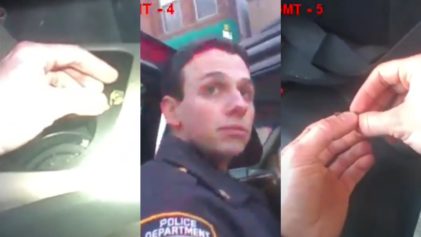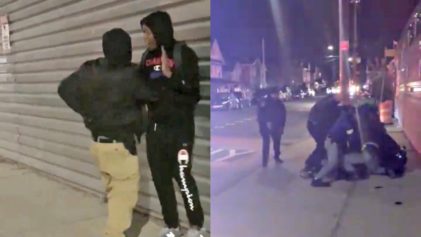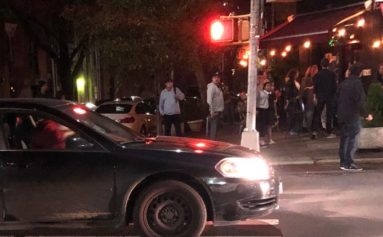
That’s one of the biggest questions the nation is grappling with in an environment where hostilities between police and Black communities are higher than they’ve been in years in the wake of many police shootings of unarmed Black men.
If the diversification of the police force is truly a solution to these hostilities and shootings, the nation can look to Los Angeles as a case study. More than any other big city, Los Angeles has made great strides in developing a force that closely mirrors the population of the city where it serves.
The LAPD (with 9,906 officers) is 44.6 percent Latino, 34.1 percent white, 11.2 percent Black and 9.6 percent Asian.
The city of Los Angeles (population 3.8 million) is 49.3 percent Latino, 28.2 percent white, 8.6 percent Black and 11.2 percent Asian.
This represents a major change over the past 25 years. In 1990, during the years of the Rodney King beating and the LA riots, the force was 61.4 percent white, 21.5 percent Latino, 13.8 percent Black and 3 percent Asian.
Clearly the department has done some significant work over the years in recruiting officers of color. But has it made a difference?
In a piece in the Los Angeles Times examining the changes in the LAPD, use-of-force statistics and commentary from many African Americans indicate that while many officers have established more cordial relationships with African-American communities than in the past, there is still considerable distrust and a belief that the police disproportionately target Black people.
Though they are just 9 percent of the city population, Black people account for 19 percent of police shootings and 31 percent of use-of-force cases, according to the LA Times. In addition, records show that about half the complaints filed with the LAPD alleging biased policing involve interactions with Black men.
The LA Police Chief, Charlie Beck, said that other factors need to be added to that equation, such as poverty, education, employment and neighborhood crime rates. It’s a line we’ve heard before—police go where the crime is, and Black people are more likely to live in higher-crime neighborhoods.
“To draw a straight-line comparison between use of force and race demographics ignores the many other disparities that not only exist but directly contribute to the situations and circumstances of police use of force,” Beck told the LA Times.
But that doesn’t account for the harassment and hostility that many law-abiding Black people encounter.
Francisco McClure told the Times he can clearly remember the days, under the infamous former police chief Daryl F. Gates, when the police would conduct sweeps on Friday night in South Los Angeles, often before big events like Raiders games, rounding up groups of young Black men they suspected of being gang members and holding them in jail over the weekend to keep violence down.
MClure, now 50, said he was arrested several times during these sweeps, only to be released on Monday morning without being charged. Now a martial arts instructor, McClure said he sees more Black and Latino cops patrolling his neighborhood of Jefferson Park and he sees less harassment and more community interaction. But the distrust is still there.
“They just cleaned up their act a little,” he told the Times. “Before it was white against blacks. Now it’s just blue against blacks.”
McClure accounted a recent incident in September when he called 911 after a man with a knife charged him near his home. When two Latino officers arrived at his home, they asked him, “Do you have any warrants? Are you on probation?”
“I had to remind them that I am a victim,” he said.
The LAPD has made national headlines recently because of two high-profile shootings of unarmed Black men. Last summer police killed Ezell Ford, a mentally ill man, when they said he tackled one of the officers and grabbed for his gun. And earlier this month they killed a mentally ill homeless man on skid row who they also said reached for one of their guns.
As the Times pointed out, none of the officers involved in those shootings was white.
Chief Beck said the allegations of mistreatment are inevitable in a department “that involves a million contacts” with the public each year. He said the department’s goal is to make those allegations isolated incidents rather than the norm.
Department supervisors recently underwent eight hours of “implicit bias training” to recognize the subconscious prejudices they might hold, according to the Times. In addition, the police also runs a magnet program in five area high schools to serve as a recruiting tool.
“If you get stopped by two Los Angeles police officers today, your chances of having two white males stop you is pretty remote,” Beck said.
The diversification of the LAPD is particularly impressive when compared with another big city, New York, whose force has been the brunt of withering attacks because of recent incidents, such as the choking death of Eric Garner.
The NYPD is 51.8 percent white, 26.5 percent Latino, 15.8 percent Black and 5.9 percent Asian.
The New York City population is just 32.6 percent white, 28.9 percent Latino, 22.4 percent Black and 13.4 percent Asian.
Newly elected city councilman Marqueece Harris-Dawson told the Times that while the LAPD deserves credit for the progress it has made, it needs to work harder to gain the trust of young people. After all, talk of how much worse it was in the past doesn’t really help them if they still feel harassed and targeted.
“When I was young in the early ’90s, I remember older family members telling me how much worse it was under Chief Parker,” the councilman said, referring to William H. Parker, who served in the 1950s and ’60s. “I thought, ‘Well, I’m still afraid of getting the crap beat out of me.'”


